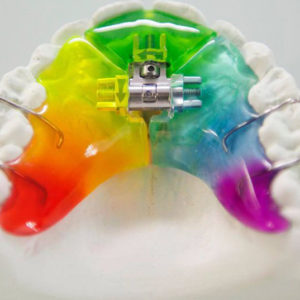- Laser whitening
- Photobleaching
- Ultrasonic bleaching technology
- Chemical method
- Alternative technologies
In more detail about each method of teeth whitening…
Today, teeth whitening is especially popular. A snow-white smile evokes the sympathy of others, attracts attention and improves the quality of life in general. Initially, teeth do not have a perfect white color. If they are healthy, then it will be rather yellowish or grayish shade: we get their color in the same way as pigments of hair, skin. Moreover, teeth are prone to darkening due to the use of different foods, colored drinks and nicotine.
Aesthetic dentistry rushes to the aid of a radiant smile.
1. Laser whitening
Effective method for the restoration of enamel, with chips on teeth. The essence of the method is reduced to the release of oxygen from a special gel under the influence of a concentrated stream of light. Dedicated oxygen molecules neutralize the effect of harmful components leading to darkening.
2. Photobleaching
Photobleaching is identical to the previous technology except for the light factor. This method of teeth whitening involves the use of a special lamp.
3. Ultrasound bleaching technology
Ultrasonic bleaching also does not work without a gel. But the provoking factor in this case is ultrasound, under the influence of which oxygen molecules are released.
4. Chemical method
Unlike previous versions, chemical bleaching is not effective in chipping and cracking. Its use is effective only for natural teeth. In this treatment will be effective for teeth with a yellow tinge, and gray teeth restoration is no longer subject. The functional agent in the chemical method is also oxygen, which causes oxidative reactions that decompose the coloring components.
5. Alternative technologies
This category of techniques includes the application of quartz resin (bonding) or porcelain plates of a small thickness to the teeth to protect them from exposure to elements that cause darkening.
Together with the obvious advantages of bleaching technologies, there are drawbacks in this category of methods – the chosen options are not always available, the failure of the equipment is not excluded. And one more circumstance too can confuse – not in all cases such means for teeth whitening is really effective.
Another new technology has been introduced and is already being actively used by many dental clinics. This is the so-called internal bleaching. This method is used in neglected cases, when traditional methods are ineffective. This technology provides internal bleaching. The procedure is suitable for teeth that need to be sealed. The gel is filled into the tooth cavity and a temporary filling is established. Such actions are carried out in several stages before complete whitening.
As can be easily seen from the descriptions, almost all modern methods of bleaching feature a gel containing in its structure oxygen molecules. The differences relate only to the technology of production of this component from the gel.
In practical experience, all these methods demonstrate a high degree of efficiency. However, results can be achieved with regular procedures, which entails time and money. In light of these priorities, with a slight darkening of the enamel of the tooth, sometimes you can limit yourself to more affordable means at home.
As the main types of bleaching, you can distinguish the home method of giving whiteness to the teeth and a number of professional ways.
The cheapest and easiest way is to chemical teeth whitening at home.
It can be carried out both under the supervision of the doctor, and independently. In the first case, the dentist makes an individual impression and produces polymer capsules that are filled with bleaching gel based on hydrogen peroxide. They are worn at home for 2 hours a day or worn overnight for 2 weeks. Hydrogen peroxide decomposes into oxygen and hydrogen, after which oxygen atoms oxidize and clarify the molecules of pigmentation of the teeth. Such whitening is not suitable for problem teeth, as it helps to increase the sensitivity of dental tissues. The method has no disadvantages: it is difficult to correctly select the required dose of a bleaching gel to achieve a snow-white smile.
Do teeth whitening just for you?
During the life of the teeth, they undergo constant exposure to various dyes that are contained in food, beverages, medicines, tobacco and cosmetics. As a consequence, there is a discolorite – a change in the color of the tooth. Dyes can precipitate on the surface or penetrate into tooth hard tissues. Often, the cause of color changes is the injury to the tooth or its endodontic treatment (treatment of canals), as well as the violation of the formation and ripening of the teeth (fluorosis, hypoplasia), a change in color and after the use of antibiotics tetracycline series (tetracycline teeth). In all cases of color changes in the teeth, professional whitening is indicated.
There is, perhaps, one absolute contraindication for professional whitening – the presence of allergic reactions to hydrogen peroxide or other components of bleaching systems. In the countries of Europe and America, professional whitening is allowed to be carried out for 13 years. In Russia, the procedure is carried out after 18 years, or earlier – in agreement with the parents and in accordance with the condition of the oral cavity of the child.


 Orthodontic treatment
Orthodontic treatment Attractive sides of the plate installation
Attractive sides of the plate installation Open bite
Open bite Deep bite
Deep bite